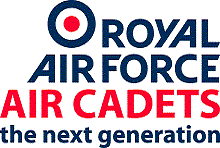Shooting

Shooting
Being a cadet means that you will be trained to safely handle a target rifle and fire on a proper target range, no matter which weapon you are trained on our instructors will ensure you feel safe and confident handling it. All cadets train on the No.8 bolt action rifle. It started life as the Lee Enfield No 4 rifle, used as far back as World War II, modified to fire the .22 long rifle round, it makes little noise, although ear defenders are always worn on the range, it is a great test of your marksmanship skills. Target shooting with the more modern L81A2 target rifle is also something you’ll get chance to do as your skills improve. ‘Dry training’ is the first thing you’ll do – exploring the No.8 in detail, and learning the commands and safety practices used on the range. After you’ve successfully passed the Weapon Handling Test (WHT) you’ll be ready to progress. When you are over 14, you can handle the L98A2 Cadet GP rifle (L98) – you have to be re-trained on this new weapon – as it uses high velocity rounds they make a louder noise when fired! It’s planned to replace this rifle with a semi-automatic version of the Enfield (the rifle will load the next round itself after firing) in the future.
Types of shooting
After you’ve familiarized yourself with your weapon and passed the WHT, the goal is to hit your target accurately and consistently. As a cadet shooter you’ll be typically firing in one of four types of practice: Grouping – You select a single point on the target and fire a number of rounds at it. The aim is for all rounds to form the smallest group possible. Deliberate Fire – Firing at a target with marked scoring rings, your score is marked depending on how near to the centre of the target you manage to get. For this you use either a large, single target or a card with 5 or 10 separate targets marked on it. When firing at a card with multiple targets, you aim to place one or two rounds on each of them. Rapid Fire – Just like it sounds, speed is the thing here. Get the round within the target area, but within a time limit. For instance, you may need to fire 10 rounds in 40 seconds – not too easy when you have to reload manually after each shot. Snap Fire – For this you have to get all rounds to fall within a target area. But, the targets only appear for a short time before vanishing again. By the end of the practice the target may have appeared – for perhaps 5 seconds – and disappeared up to 5 times. Just to make it even more difficult, it’ll sometimes appear at random time intervals!
Shooting competitions
If you’re good, and we mean really good, then you could qualify to shoot with the best in the country at the Bisley and Pirbright competitions. There are several events for individuals and teams. The annual highlight is the Inter-Service Cadet Rifle Meeting (ISCRM), a target shooting competition where you get to compete against members of the ACF (Army Cadet Force) and SCC (Sea Cadet Corps). The Cadet Inter-Service Skill At Arms Meeting (CISSAM) takes place annually on the ranges at Purbright. Like the rifle meeting at Bisley, it’s a top level competition for teams and individuals.
Squadron Marksman
|
Wing Marksman
|
Regional Marksman
|
Corps Marksman
|
Cadet 100
|
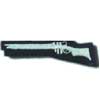 |
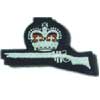 |
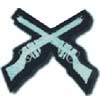 |
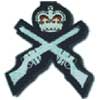 |
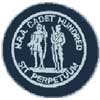 |
The shoot for Squadron Marksman consists of four practices of five round groupings at a standard target from 25m. The groups are scored: 1″ = 25pts, 1.5″ = 20pts and 2″ = 15pts. The points for each group are added together and a total out of 100 is calculated. A cadet must achieve a score of 75 or above in order to qualify to the award. Thus a minimum of 3 x 1.5″ groups and one 2″ group must be fired. Achieving the award authorises the cadet to wear the Squadron Marksman badge, as shown above, on the brassard.
|
The shoot for Wing Marksman consists of four different practices at standard targets from 25m. The first is a five round grouping practice, which is scored as Squadron Marksman. The second is a rapid practice where 5 rounds must be fired in quick succession, scoring 3pts per hit. The third is a snap practice where 5 rounds must be fired at the target in 5 x 5 second exposures again scoring 3pts per hit. The fourth and final practice is a five round deliberate practice, again scoring 3pts per hit. This marksmanship award is therefore scored out of 70, with 54pts being the minimum to achieve Wing Marksman, which authorises the cadet to wear the Wing Marksman badge, as shown above, on the brassard.
|
The shoot for Regional Marksman consists of four different practices at standard targets from 25m. The first is a five round grouping practice, which is scored as Squadron Marksman. The second is a rapid practice where 5 rounds must be fired in quick succession, scoring 3pts per hit. The third is a snap practice where 5 rounds must be fired at the target in 5 x 5 second exposures again scoring 3pts per hit. The fourth and final practice is a five round deliberate practice, again scoring 3pts per hit.This marksmanship award is therefore scored out of 70, with 60pts being the minimum to achieve Regional Marksman, which authorises the cadet to wear the Regional Marksman badge, as shown above, on the brassard. |
The shoot for Corps Marksman consists of four different practices at standard targets. The first is a 10 round deliberate shoot, with each round within the gauge ring scoring 3pts. The second is a 10 round rapid shoot, with 3pts scored for each hit inside the gauge ring. The third is a 10 round snap practice shot over 5 exposures (two rounds per exposure). The final practice is another 10 round deliberate shoot, again scoring 3pts per hit within the gauge ring.In order to achieve the Corps Marksman award, cadets must shoot 100 out of the 120 available points, and will then be authorised to wear the Corps Marksman badge, as shown above, on the brassard.
|
The Cadet 100 badge can only be achieved at the Inter Service Cadet Rifle Meeting held annually as Bisley Ranges. To qualify for the award, a cadet must score amongst the top 100 of all cadets present over the weekend. This is really an achievement, as only 100 are awarded out of all the cadets in the country. There are more than 40,000 Air Cadets alone!
|
 |
 |
 |
 |
 |
2013
Cdt Holliday D
2016
Cdt McGeown C
|
2013
Cpl Pearce C
2015
Cdt Siekierzynski P
2016
Cdt Genoveese C
|
2013
Cpl Charlton J
Cdt Bards R
F/Sgt Oxby A
F/Sgt Lockie M
2015
Cdt Avery J
Sgt Stacey H
CWO Oxby A
F/Sgt Lockie M
Cpl Charlton J
Cdt Jones L
Cdt Siekierzyski
2016
Cdt Wait A
Cpl Chew W
Cdt Wilks A
|
2014
Sgt Stacey H
2015
CWO Lockie M |
|

